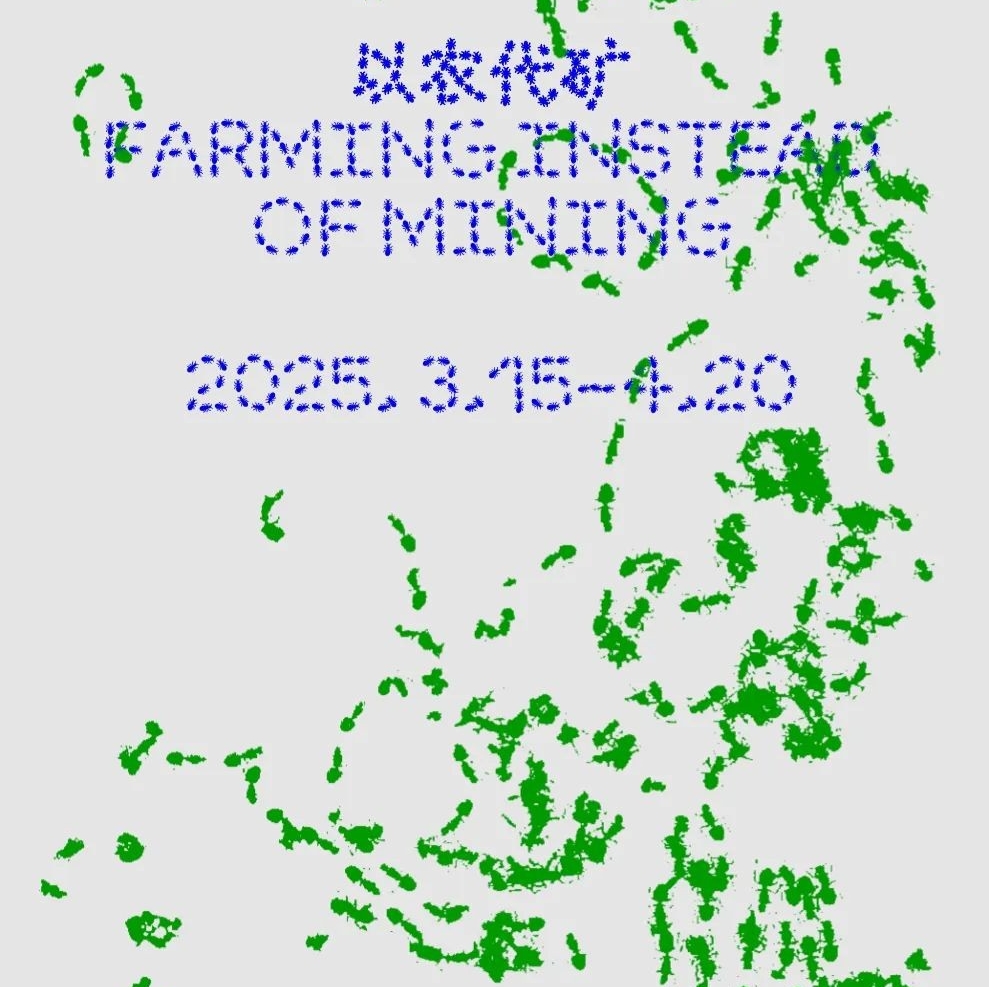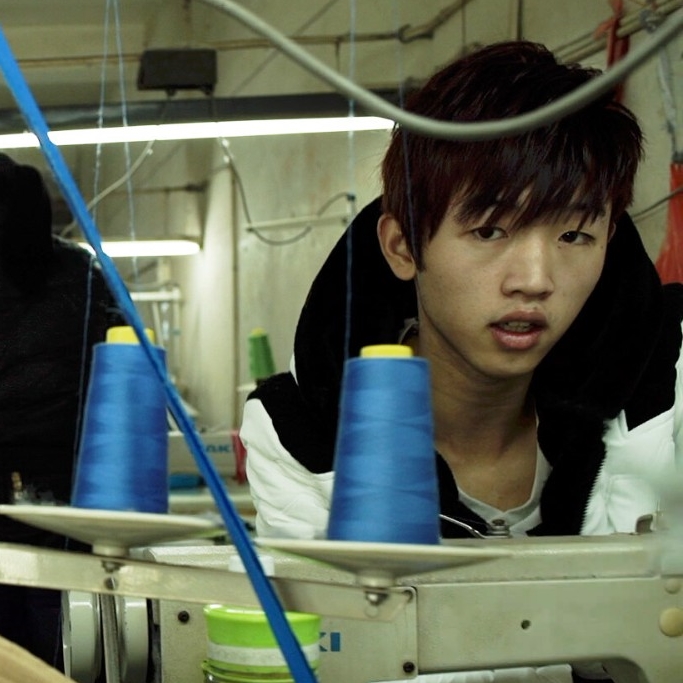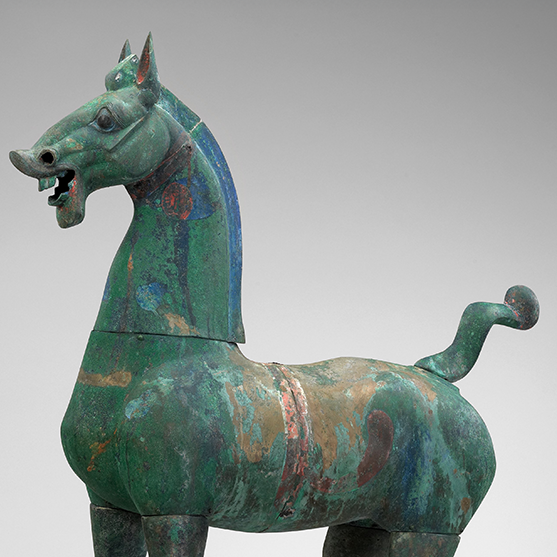
Qu Yuan, 1942. Fu Baoshi (Chinese, 1904-1965). Hanging scroll, ink and light color on paper; 58.2 x 83.7 cm. Nanjing Museum
In its first collaboration with the Nanjing Museum, one of the oldest and most comprehensive museums in China, the Cleveland Museum of Art organizes an international loan exhibition features extraordinary works of art by the major modern Chinese master Fu Baoshi. Entitled Chinese Art in an Age of Revolution: Fu Baoshi (1904-1965), it is the first retrospective in the Western Hemisphere of the artist who revolutionized the tradition of Chinese ink painting. The exhibition will be on view at the Cleveland Museum of Art from October 16, 2011 through January 8, 2012 and it is also the first time these works can be viewed outside China. It will then travel to the Metropolitan Museum of Art in New York from January 30 through April 29, 2012.
Featuring 90 works on loan from the Nanjing Museum, a venerable Chinese museum that currently houses the most significant and comprehensive collection of Fu Baoshi’s artwork donated by the Fu family, this exhibition examines his artistic career through an overview of his work dating from the 1920s to 1965. By situating Fu Baoshi within the art-historical, social, political, and cultural contexts in which his art was created, a fascinating story is told of the artist’s struggle and political reconciliation in a time of war and revolution. It reveals the complexity of art and politics in China’s turbulent twentieth century. From traditional-style landscape and figure paintings to political artwork manifesting state ideology, a wide variety of work demonstrates the artist’s search for a unique artistic language that speaks for the self and the nation, providing an important insight into his use of native tradition to present modern Chinese art as distinct from Western and international socialist art.

Whispering Rain at Dusk, 1945. Hanging scroll, ink and light color on paper; 103.5 x 59.4 cm. Nanjing Museum.

Mountain Spirit, 1946. Hanging scroll, ink and light color on paper; 163 x 82.8 cm. Nanjing Museum
As is reported by Artdaily.org, “Given the strength of the Cleveland Museum of Art’s Asian collection and scholarship, we’re particularly excited to be contributing to the study and exhibition of one of China’s most important modern artists,” says David Franklin, Cleveland Museum of Art Director. Also Anita Chung, PhD, curator of Chinese art for the Cleveland Museum of Art believes that “Fu Baoshi’s art represents the quest for beauty even in the most difficult circumstances since tt has an aesthetic appeal that transcends history and distance in time and space, and, in this respect, the exhibition concerns aesthetics as much as context in light of the nationalistic sentiment and political ideology that shaped Fu’s expression in an age of crisis.”

Crossing the Dadu River, 1951. Horizontal scroll, ink on paper; 62 x 109.3 cm. Nanjing Museum.

Gottwaldov, 1957. Fu Baoshi (Chinese, 1904-1965). Album leaf, ink and color on paper; 48.7 × 57.1 cm. Nanjing Museum.

Snow: Poem of Mao Zedong, 1958. Fu Baoshi (Chinese, 1904-1965). Album leaf, ink and color on paper; 34 × 50 cm. Nanjing Museum.

The Two Goddesses of the Xiang River, 1961. Fu Baoshi (Chinese, 1904-1965). Hanging scroll, ink and color on paper; 134 x 68.5 cm. Nanjing Museum.

Jinggang Mountain, 1964. Fu Baoshi (Chinese, 1904-1965). Hanging scroll, ink and light color on paper; 81.8 x 49.6 cm. Nanjing Museum.

To Guo Moruo: Poem of Mao Zedong, 1964. Fu Baoshi (Chinese, 1904-1965). Hanging scroll, ink and color on paper; 34.2 x 44.9 cm. Nanjing Museum

Heaven and Earth Glowing Red (detail), 1964. Fu Baoshi (Chinese, 1904-1965). Horizontal scroll, ink and color on paper; 70.9 × 96.9 cm. Nanjing Museum
According to the Cleveland Museum of Art, the highlights of Chinese Art in an Age of Revolution: Fu Baoshi (1904-1965) include:
Qu Yuan, 1942. Fu Baoshi created this compelling image of the ancient poet-statesman Qu Yuan, emphasizing his psychological suffering before his suicide in the Miluo River. The image sheds light on the grievances and pathos of China’s modern intellectuals in the face of war and political corruption.
Plucking the Yuan, 1945. Beauty embodying refined elegance and music invoking the feeling of ecstasy, this painting portrays three women using music for inner cultivation and self-improvement. It affirms certain human values and cultural ideals in an eventful age.
Whispering Rain at Dusk, 1945. This work represents Fu Baoshi’s signature style in landscape depiction and shows his sensitive use of the brush, ink, color, light and atmosphere to depict a stormy scene during World War II.
Gottwaldov, 1957. A vivid image of the smoggy, industrial city of Gottwaldov (present day Zlìn) in the Czech Republic, painted during his official visit to Eastern Europe, Fu’s portrayal is characterized by a dark mystery, which makes it a powerful statement on modern industrialization, subject to the viewer’s interpretation.
Swimming: Poem of Mao Zedong, 1958. The subject of this painting is Mao swimming across the Yangzi River. He is depicted floating in the river, with only his head visible above the surface of the water. Mao swam across the river many times, in which he found the inspiration for his plan of taming the Yangzi with human structures, as laid out in his 1956 poem “Swimming.”
Heavenly Lake and Flying Waterfall, 1961. This strikingly simple and abstract composition effectively captures the awe-inspiring beauty of Changbai Falls, which flows from a river outlet of the lake on top of Changbai Mountain in Jilin Province, on the border with North Korea. Glittering in the light, the silvery white water stands out against the deep, black ink washes creating the precipitous cliffs.
Heaven and Earth Glowing Red, 1964. The red globe of the earth floats in rose-colored air. Natural phenomena, including a pine tree, rock, falling leaves, ocean, wind, mist and lightning, are incorporated in an abstract design for romanticizing Chinese communist revolution. This is Fu’s interpretation of the political abstractions of the time based on Mao’s poetry. It fulfills the political requirement to direct art in the service of the Party and the masses.
Image Courtesy of the artist and Nanjing Museum.
Reports related to this:
1. First retrospective of Fu Baoshi in the West made possible by partnership with the Nanjing Museum in China by Artdaily.org
http://www.artdaily.com/index.asp?int_sec=2&int_new=51152
2. Chinese Art in an Age of Revolution: Fu Baoshi (1904-1965) by the Cleveland Museum of Art




























